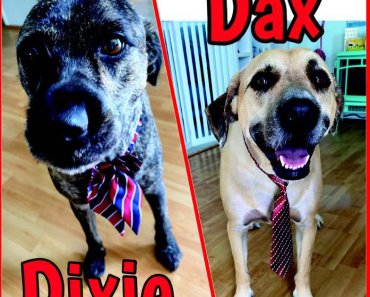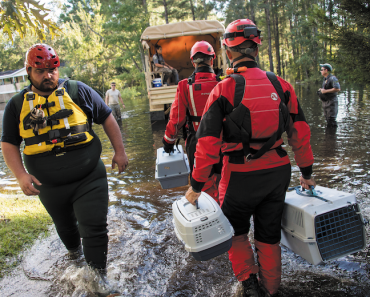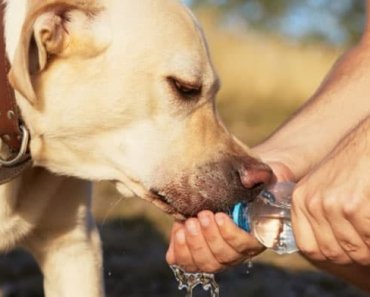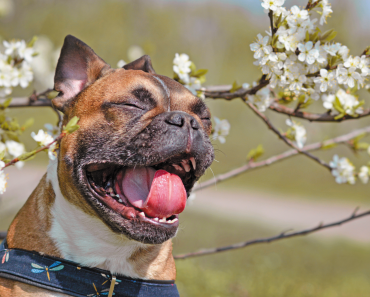An important key to taking the anxiety out of vet visits is to train your dog to calmly accept handling and gentle restraint, and to make the experience from start to finish as pleasant as possible.
Sharing your life with a dog can help combat stress – until it’s time to visit the veterinarian, that is! No one likes to see their dog filled with fear and anxiety, which is why a lot of people postpone or skip vet visits. But putting off veterinary check-ups does more harm than good, so the solution is to help your dog tolerate or even enjoy going to the vet. It might seem impossible, but not if you follow these training techniques!
Why do dogs hate going to the vet?
A vet visit involves a lot of handling, poking and prodding. Typically, during a check-up, the veterinarian will shine a bright light into your dog’s eyes, open his mouth and look at his throat, gums, and teeth, take his temperature, listen to his heartbeat, manipulate his legs, look for lumps on his body, part his hair and evaluate his skin, and check his ears. And these are just the basics. If your dog has an illness or injury, or needs vaccines or a blood draw, the list is even longer. That’s a lot of “stranger handling”. Even if your vet is exceptionally kind and gentle, an examination can still be stressful if your dog isn’t accustomed to such handling.
Your dog’s stress may be further heightened by the strange surroundings, along with the smells and sounds of other dogs (and cats) who are also stressed out by the experience. And if you’re feeling edgy and anxious yourself, your canine companion will pick up on that, adding to his own angst. Is it any wonder so many dogs hate going to the vet’s office?
Happy handling tips
Teaching your dog to accept handling is a key to making vet visits less stressful. If he’s a cool cucumber when being handled at home, he’ll be happier and more comfortable during his veterinary exam. The goal is to teach your dog that being subjected to handling while having to stay relatively is a good thing, and nothing to be feared.
- To start, purchase a nice bath mat with a rubber backing. This will become your dog’s handling mat. You’ll be taking it with you to his veterinary visits; doing this will help give him a sense of the comforts and routine of home, and also will provide him with a warm surface that won’t slip on a tile floor or metal exam table.
 On a daily basis, choose one part of your dog, such as his head. Place his mat on the floor and ask him to sit on it. Next, sit in front of your dog and gently touch his face, moving your fingers around his eyes. Look into his eyes and tell him how handsome and smart he is. Then give him a tasty treat. Continue looking at and touching him around his face and talking to him in a gentle and kind tone, randomly providing him with a treat for being so smart and accommodating. Gently lift up his lip, and as you do so, slip a treat in his mouth. Repeat on the other side of his face. Lift each ear, looking inside, again talking to him and giving him a treat.
On a daily basis, choose one part of your dog, such as his head. Place his mat on the floor and ask him to sit on it. Next, sit in front of your dog and gently touch his face, moving your fingers around his eyes. Look into his eyes and tell him how handsome and smart he is. Then give him a tasty treat. Continue looking at and touching him around his face and talking to him in a gentle and kind tone, randomly providing him with a treat for being so smart and accommodating. Gently lift up his lip, and as you do so, slip a treat in his mouth. Repeat on the other side of his face. Lift each ear, looking inside, again talking to him and giving him a treat.- Continue this process from your dog’s head down to his toes. Done every day, this exercise teaches your dog to enjoy handling and helps ensure a happy veterinarian visit. It also gives you the opportunity to check for lumps, bumps, or any abnormalities. You are always your dog’s first line of defense. Print out a diagram of a dog and note on it anything out of the ordinar, such as the location, size and color of a bump, along with the date you noticed it. This helps you track your dog’s health and can be a great diagnosing tool for your veterinarian.
Respectful restraint tips
Few things make a dog’s stress worse at the vet’s office than having to forcefully hold him down during the exam. The daily handling exercise outlined above will go far in preventing the need to physically hold your dog still. However, you should also work on teaching him to stay still during parts of the exam, and to be comfortable with the “vet hold.”
Depending on what your veterinarian or his/her staff is trying to accomplish, there are various holds they may perform on your dog:
- One is to place an arm under his belly and groin area, the other arm under his neck, and lean the dog into their body. This is to help stabilize the dog from moving, and prevent biting.
- Another common hold involves the dog lying down and the vet or technician leaning over him with one arm under his neck and the other over his shoulders and back.
A good practitioner performs these holds in a gentle but firm manner. However, they can be very stressful for the dog.
Slowly teaching your dog to enjoy these positions without fear is a great way to help him feel more at ease. Practice restraint techniques at home by slowly slipping your arm under your dog’s belly, telling him how good he is and giving him a treat. Repeat this process with the holds described above, and gradually increase the time you’re holding him before giving him a treat.
Additional suggestions for a stress-free vet visit
To help make the experience even easier on your dog, don’t rush vet visits. Ideally, make the appointment on a day when you’ll have to the time you need to ensure a happy visit.
- Before heading to the clinic, take your dog for a walk at a nearby park. Allow him to sniff and potty and let off a little steam.
- Load him into the car and head to the vet’s office. Before entering the hospital, take your dog for another walk around the grounds. Let him mosey, sniffy, potty (don’t forget to clean up after him!), and get his bearings.
- When entering the vet clinic, keep an eye out for other dogs, and give everyone else enough space. Keep an eye on your dog, smile, and give him treats while checking in. If you have taught your dog to sit and stay, this is a great time to utilize that skill.
- In the waiting room, find a spot where you and your dog can relax and do a few tricks. Keeping your dog focused on you in a fun way while earning some rewards is a great way to ward off stress.
- Once inside the exam room, allow your dog to sniff and investigate the space. Place his mat on the floor or on the exam table.
- When the veterinarian comes in, say “hello” in a friendly voice, and also tell your dog to go say “hi”. Your dog is paying close attention to how you interact with and respond to the vet, so be pleasant. Hopefully, the vet will greet your dog and say “hello” with a few friendly pats before diving into the exam.
- Be as hands-on as you possibly can. Your dog will be happier if you are the one to hold and handle him, but this can only be accomplished if you’ve been practicing at home and are secure in what you are doing. The veterinary team needs to ensure that your dog will not be too squirmy during the check-up, so they may need to step in. Either way, stay with your dog, tell him he’s being good and, if possible, give him treats when appropriate. You do not want to be in the way, of course, so use common sense. You may even be able to have a treat-toy filled with your dog’s favorite licky paste that he can lick during his visit.
- Before you know it, his exam will be over, and you can go leave. But, don’t head straight home; take a detour back to the park for another sniff around! This will help him further associate vet visits with something enjoyable.
Another Animal Wellness article focuses on how understanding and managing your dog’s emotional state can take a lot of stress out of vet visits. By adding that knowledge to the techniques covered in this article, your dog will go from hating trips to the vet to happily accepting them!



























